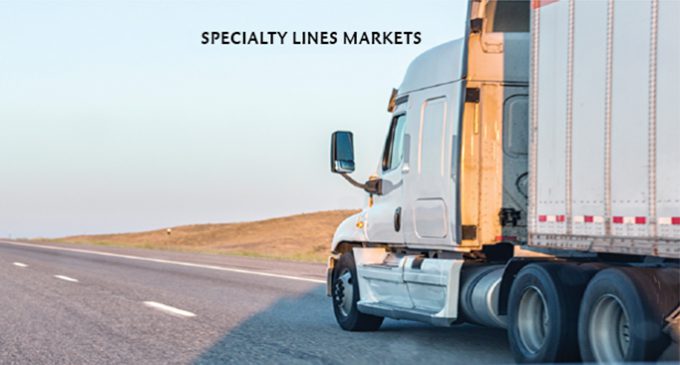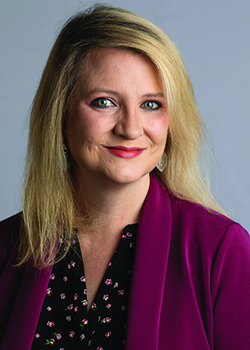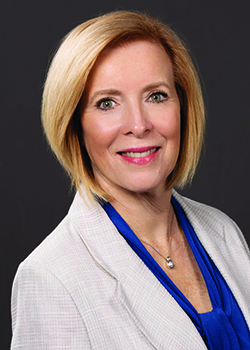COMMERCIAL AUTO

COMMERCIAL AUTO
Has the line turned a corner, or are there miles yet to go?
By Joseph S. Harrington, CPCU
Over a decade of relatively benign conditions in property/casualty insurance, commercial auto—buffeted by rising severities of both personal injury and physical damage losses—stood out as a uniquely distressed line struggling to achieve stable profitability.
Then, after several years of steep rate hikes, expanded implementation of vehicle telematics, and rigorous loss control efforts, commercial auto insurance finally produced a combined ratio below 100 in 2021. The ratio rose to slightly above 100 in 2022, and some experts predict it will hover around there through 2024.
For a line featuring many short-tail claims, predictions of a sustained period of underwriting losses is not good news. But with severe long-tail bodily injury claims having a profound impact on operating results, and with interest rates rising, a combined ratio around 100 may be sustainable.

“The stabilization in 2021 may have
been a bit of a mirage aided by a decrease
in accident frequency due to the pandemic.”
—Nick Saeger
Assistant Vice President, Transportation Products and Pricing
Sentry Insurance
So, will the better times last? Or do the immediate post-pandemic results mask unresolved imbalances in the line?
“There was a period of stabilization, but then results took a turn for the worse in 2022,” says Nick Saeger, assistant vice president of transportation products and pricing for Sentry Insurance. “The stabilization in 2021 may have been a bit of a mirage aided by a decrease in accident frequency due to the pandemic.
“In 2022, crashes started increasing again, though perhaps still not back to a pre-pandemic level,” he adds. “At the same time, severity continues to increase.
“The forces that have driven social inflation—attorney involvement in claims and litigation financing, to name two—have not abated. In addition, physical damage results have been eroded as the costs of parts, labor, and used vehicles have skyrocketed.”
Jennifer Ridgill, underwriting manager for commercial transportation and trucking at Johnson & Johnson Insurance, a wholesale brokerage, won’t characterize the commercial auto market as unstable, but she says it “has not turned around and is maybe less stable than other lines.
“Rate increases have moderated, and many of our better renewals are coming in mostly flat,” she says, “but carriers continue to exit, and there aren’t many new carriers entering the space. More competition and better success defending multi-million-dollar claims would help turn things around.”
Elusive equilibrium
Jeff Morris, vice president of marketing and operations for Berkshire Hathaway Homestate Companies, shares the view that commercial auto insurance has quite a way to go before it achieves a new equilibrium.
“The commercial auto market is still experiencing serious difficulties,” he says. “Inflation is affecting claim severities and loss development, leading to increased uncertainty regarding necessary rate levels.
“I don’t think the commercial auto insurance market will stabilize until claims inflation and loss development patterns reach more firmly fixed and predictable levels.”
Given the legal and economic challenges outside the control of insurers and insureds, “stability will only come by focusing on what we can influence and improve,” says Beth Hannon, vice president of excess and surplus lines commercial auto for Nationwide Insurance.
“Our efforts focus on partnering with insureds to address what’s within their control, their driver training and safety practices,” she adds. “Telematics technology continues to evolve and improve results. These efforts combine to promote stability for individual risks and for the overall book.”
Drivers and telematics
Commercial auto insurers may also benefit from a relaxation in demand for experienced drivers, according to Hannon.
“During the pandemic, with great demand for goods and high ‘spot rates’ for deliveries, many drivers ventured out on their own,” she explains. “Today, we are seeing a decrease in this trend as more and more experienced drivers return to the regular workforce. As experienced drivers return, newer, less experienced drivers will receive additional training and careful oversight.”
Hannon adds that shippers and motor carriers are enhancing their efforts to recruit good drivers, offering improved benefits and sign-on bonuses, among other measures. In these efforts they are helped by new online platforms developed to match the needs of drivers with shippers and motor carriers.
Faced with a lingering shortage of qualified drivers, Ridgill notes, motor carriers and shippers reaching out to younger drivers through proprietary training programs subject to federal guidelines. “These initiatives should eventually add more experienced drivers, but there may still be problems finding insurers willing to cover younger drivers,” she says.
Ridgill believes implementation of vehicle telematics is key to addressing insurer concerns over driver quality. “Telematics provide real-time monitoring, which is huge for loss control,” she says. “This may not result in a big immediate price reduction but could have a bigger impact later on.”

“[C]arriers continue to exit, and
there aren’t many new carriers entering
the space. More competition and better success
defending multi-million-dollar claims
would help turn things around.”
—Jennifer Ridgill
Underwriting Manager, Commercial Transportation and Trucking
Johnson & Johnson Insurance
Cyber risk emerges
Nationwide’s “focus on what we can influence” extends to partnerships with several technology firms to provide telematics to Nationwide’s commercial auto accounts. “Telematics are making an impact,” Hannon says. “They are helping to reduce behaviors like speeding, following too closely, and distracted driving, and make a difference in helping to improve the safety of individual drivers and fleets.”
While online connections with drivers and vehicles reduce some risks, they introduce another: cyber risk, the potential for a malicious actor to hack a telematics system with the aim of disrupting operations or causing accidents.
“Any business that engages in digital commerce has cyber risk,” says Brian Hall, vice president of products and underwriting for Berkshire Hathaway Homestate. “While we haven’t yet seen this prominently within our commercial auto client base, the exposure is emerging as the trucking business becomes increasingly driven by electronics.”
Saeger notes that “you occasionally see trucking systems being attacked and the companies held ransom.
“As trucking operations become more digitized and attacks increase, a cyber policy can provide protection to motor carriers; it is important that agents and brokers communicate the type of protection that coverage provides.”
Hannon notes that “the focus on improving safety through networked technology is occurring rapidly.
“Today we have a lot of trucks with connected devices reporting their location at any time. With this comes exposure not only for cyber threats and ransomware attacks, but also for cargo thefts,” she says. “It is essential to understand the latest in security practices and safety protocols to reduce that risk and mitigate exposure.”

“Inflation is affecting claim
severities and loss development, leading to
increased uncertainty regarding necessary rate levels.”
—Jeff Morris
Vice President, Marketing and Operations
Berkshire Hathaway Homestate Companies
Producer role
How can agents and brokers help the commercial auto insurance market achieve stability?
“The first thing I would recommend to an agent or broker is to let their customers know that their federal motor carrier safety data is very important for insurance purposes,” says Morris. “This information has proven to be very predictive of loss experience.
“Agents and brokers should also advise their trucking clients about the risks and rewards of rapid growth,” Morris adds. “Revenue growth is great, but it often comes with rapid turnover of vehicles and drivers within a fleet. That, in turn, is associated with greater expected losses and higher premiums in the future.
“Finally,” he notes,” agents and brokers would be well advised to place their trucking clients with transportation insurance specialty carriers who are familiar with the underwriting, coverage, and claims-handling requirements in commercial auto.”
Saeger observes that “in terms ofcost savings, our safety-conscious customers are having success taking on larger deductibles.
“For those that have invested in telematics and strong safety programs, larger deductibles defray the up-front costs and if the investment leads to fewer claims, they save on the back end, too.”
Beyond that, Saeger essentially agrees with Morris’s comment about the value of placing clients with carriers that specialize in commercial auto and related coverage.
“For truckers, the key is finding insurers that specialize in trucking,” he says.
“Those companies have products to suit the needs of motor carriers and they’re the best suited to provide the best claims management, with adjusters that handle nothing but large truck accidents. Specialized truck insurance companies often also have safety consultants that help set up motor carriers for success, which leads to the best insurance coverage for the cost.”

“Telematics are making an impact.
They are helping to reduce behaviors like speeding,
following too closely, and distracted driving, and make
a difference in helping to improve the safety of
individual drivers and fleets.”
—Beth Hannon
Vice President, Excess and Surplus Lines Commercial Auto
Nationwide Insurance
For more information:
Berkshire Hathaway Homestate Companies
www.bhhc.com
Johnson & Johnson Insurance
www.jjins.com
Nationwide Insurance
www.nationwide.com
Sentry Insurance
www.sentry.com
The author
Joseph S. Harrington, CPCU, is an independent business writer specializing in property and casualty insurance coverages and operations. For 21 years, Joe was the communications director for the American Association of Insurance Services (AAIS), a P-C advisory organization. Prior to that, Joe worked in journalism and as a reporter and editor in financial services.











